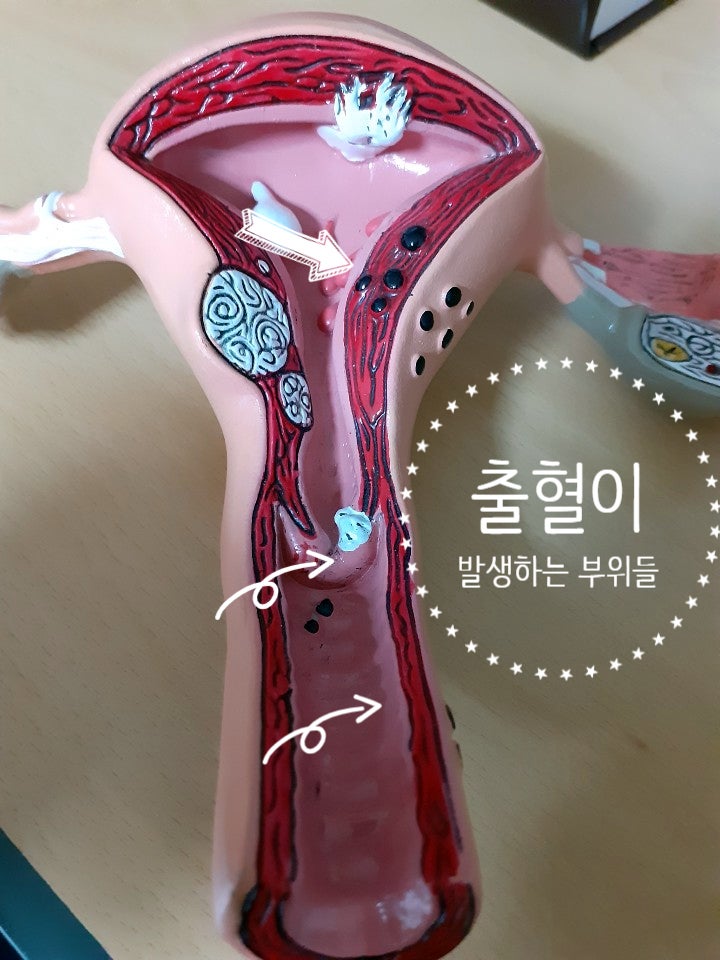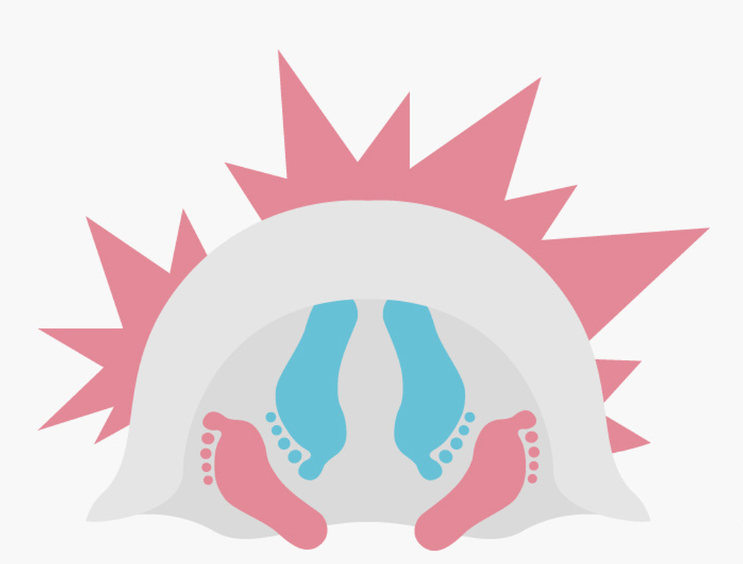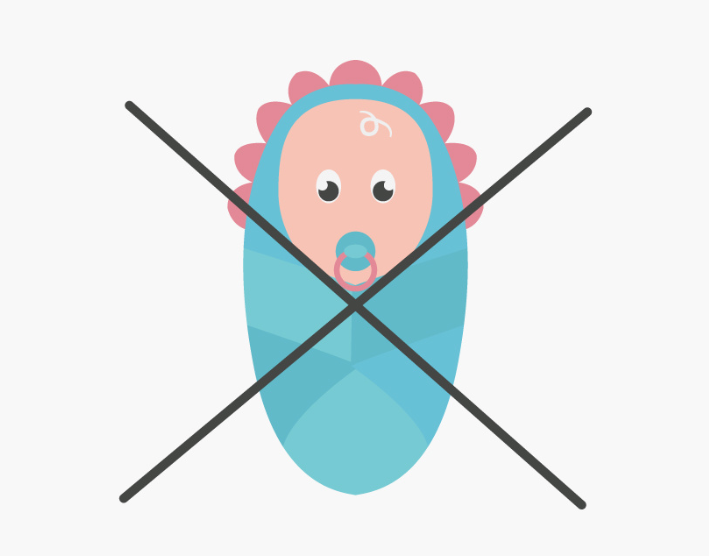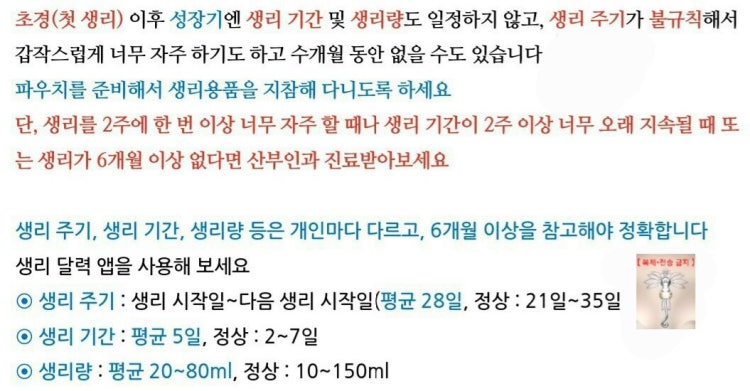관계 후 갈색냉
관계 후 갈색냉은 많은 여성들이 겪는 문제 중 하나이다. 이는 관계 후 발생하는 조직 손상이나 건강 문제로 인한 것으로, 갈색 혹은 검은 색의 냉증(discharge)와 출혈을 유발한다. 이것은 광범위하게 일어날 수 있기 때문에, 많은 여성들이 관계 후 갈색냉에 관심을 가지고 있다.
관계 후 갈색냉의 원인 및 이유 탐구
관계 후 갈색냉은 다양한 원인으로 인해 발생한다. 그 중 가장 일반적인 것은 혈액이 폐쇄되는 것으로 생각되는데, 이는 월경과 관련된데, 월경 후에도 발생할 수 있다.
또한, 사후 피임약이나 생리할 때 진행되는 단계에 따라 관계 후 갈색냉이 많을 정도가 결정될 수 있다. 메니스트로 메라지는 생리 주기의 첫 번째 단계에 해당하는데, 혈액 포화 상태가 유지된다. 이 매운 맛 바나나 내츄럴 독인스는 생리와 관련하여 발생할 수 있는 각종 문제를 완화할 수 있다는 연구 결과가 있기 때문에, 갈색냉을 경험하는 여성들은 이를 참고하면 좋다.
증상 및 징후 파악
관계 후 갈색냉은 다양한 증상과 징후를 가지고 있다. 그 중에서도 냉출물의 색과 냄새는 갈색, 검은 색, 혹은 붉은 색일 수 있다. 이중 갈색냉임에도 찌꺼기가 많으면 해당 부위의 불순물이 축적되어있을 가능성이 높다.
관계 후 갈색냉은 또한 부비동과 고름 증상을 유발할 수 있다. 이 때 고름 증상이 높은 경우, 일주일 내성곽주간을 진행해보는 것이 좋다. 그리고 이러한 징후가 지속되거나 심각한 경우 의료진과 상담하는 것이 중요하다.
인물에 따른 차이점 탐구
일부 여성들은 월경을 기준으로 하여 관계 후 갈색냉을 경험하는 반면, 일부 다른 여성들은 이러한 현상을 경험하지 않기도 한다. 이러한 차이는 여성 각각의 신체 상태와 특징, 그리고 생리 주기에 따라 다르기 때문이다.
또한, 증상이 발생하는 정확한 시기도 다를 수 있다. 관계 후 3일부터 5일 후에 발생하는 갈색냉이 가장 일반적이지만, 몇몇 여성들은 즉시 발생할 수도 있다.
진단 방법과 검사
관계 후 갈색냉을 진단하려면, 건강한 여성들일 경우 우선적으로 생리 주기와 관련된 부분을 고려해야 한다. 또한, 관계 후 발생한 갈색냉이 아니라 다른 병력이 있다면 이러한 부분에 대해서도 충분한 조사가 필요하다.
의료진은 섬유 결절과 같은 이전 질병 기록, 유전자 변이, 그리고 신장 문제 등을 모두 고려한다. 그리고 검사는 인터넷 기반의 종양 표지자나 혈액 검사, 그리고 생리 증상의 개별 검사 등으로 이루어질 수 있다.
증상 완화 및 예방법 연구
관계 후 갈색냉을 완화하기 위해서 여러 가지 방식을 시도할 수 있다. 이 중 일반적인 것은 검사와 진료를 받고 의사의 권고에 따라 적합한 대처방법을 찾는 것이다.
또한, 관계 후 갈색냉에 대한 예방 조치를 취하는 것도 중요하다. 예를 들면, 생리 전후에 모음, 갈색냉 찌꺼기 등이 존재하고 검사결과물에 문제가 없다면, 월경과 관련된 착상혈의 형성을 막기 위해서는 생리 전후 5일간을 기다린 후 6일간 진행하는 유산방지피임약을 복용하는 것이 좋다.
FAQs
Q1. 관계 후 갈색냉의 원인은 무엇인가?
A1. 관계 후 갈색냉은 다양한 원인으로 인해 발생한다. 그 중 가장 일반적인 것은 혈액이 폐쇄되는 것으로 생각되는데, 이는 월경과 관련된데, 월경 후에도 발생할 수 있다.
Q2. 관계 후 갈색냉은 어떻게 진단될 수 있는가?
A2. 관계 후 갈색냉을 진단하려면, 건강한 여성들일 경우 우선적으로 생리 주기와 관련된 부분을 고려해야 한다. 또한, 관계 후 발생한 갈색냉이 아니라 다른 병력이 있다면 이러한 부분에 대해서도 충분한 조사가 필요하다.
Q3. 관계 후 갈색냉은 언제 발생하는가?
A3. 일반적으로 관계 후 3일부터 5일 후에 발생하는 것이 일반적이지만, 몇몇 여성들은 즉시 발생할 수 있다.
Q4. 관계 후 갈색냉을 경험하는 여성들은 어떻게 대처해야 하는가?
A4. 검사와 진료를 받고 의사의 권고에 따라 적합한 대처방법을 찾는 것이 좋다. 또한, 관계 후 갈색냉에 대한 예방 조치를 취하는 것도 중요하다. 예를 들면, 생리 전후에 모음, 갈색냉 찌꺼기 등이 존재하고 검사결과물에 문제가 없다면, 월경과 관련된 착상혈의 형성을 막기 위해서는 생리 전후 5일간을 기다린 후 6일간 진행하는 유산방지피임약을 복용하는 것이 좋다.
사용자가 검색한 키워드: 관계 후 갈색냉 갈색냉 찌꺼기, 생리 안하고 갈색냉, 관계 일주일 후 착상혈, 관계 후 3일 출혈, 관계 할 때 갈색, 관계 후 피 덩어리, 관계 후 물, 관계후 출혈
Categories: Top 49 관계 후 갈색냉
[댓글읽기] 갈색냉이 나오면 병원을 가야하나요?
여기에서 자세히 보기: c3.castu.org
갈색냉 찌꺼기
Causes of 갈색냉 찌꺼기
The accumulation of 갈색냉 찌꺼기 is caused by a variety of factors. One of the primary factors is the air quality in the surrounding environment. Polluted air and dusty conditions can cause dust and dirt particles to circulate in the air and be sucked into the air conditioner, where they can accumulate in the filters.
Another factor that may contribute to the build-up of 갈색냉 찌꺼기 is inadequate maintenance of the air conditioner. If the filters are not cleaned regularly or the system is not serviced, particles can build up over time and form the sludge.
Effects of 갈색냉 찌꺼기
The build-up of 갈색냉 찌꺼기 can have several negative effects on the air conditioning system. One of the main effects is a reduction in the effectiveness of the cooling unit. The sludge can impede the flow of clean, cool air through the filters, which makes the air conditioner work harder to produce the same level of cooling. This can lead to higher energy consumption and, ultimately, higher electricity bills.
In severe cases of build-up, the air conditioner may break down completely. When the filters become clogged with 갈색냉 찌꺼기, air cannot circulate effectively through the system. As a result, the air conditioner may overheat and malfunction. Repair or replacement in this case is often more costly than preventative maintenance.
Prevention of 갈색냉 찌꺼기
There are several steps that can be taken to prevent the build-up of 갈색냉 찌꺼기 in your air conditioning system.
First, regularly replace or clean the filters in your air conditioner. This can help to trap dust and other particles before they accumulate in the system and form sludge. Doing this will also help to maintain the efficiency of your air conditioning unit.
Second, consider installing an air purifier. These devices can help to improve the overall air quality in your home and reduce the amount of airborne particles that are sucked into your air conditioning system.
Finally, ensure that your home is well-ventilated. Open windows whenever possible to allow fresh air to circulate throughout your home and minimize the amount of stagnant air in your environment.
Removal of 갈색냉 찌꺼기
If you have already experienced a build-up of 갈색냉 찌꺼기 in your air conditioning system, there are several ways to remove it.
One method is to clean the filters in your air conditioner with a brush or vacuum cleaner. This can help to remove any loose particles, but may not be effective for more stubborn accumulations.
Another option is to use a chemical cleaner specifically designed for removing 갈색냉 찌꺼기. These cleaners are widely available from hardware stores and online retailers. Simply follow the manufacturer’s instructions to apply the cleaner to your filters and allow it to soak for the recommended amount of time before rinsing off.
For more severe build-ups, it may be necessary to disassemble your air conditioning unit and manually clean the filters. However, this is a more complex process and should only be attempted by experienced professionals.
FAQs
Q: What are some signs that my air conditioning system has a build-up of 갈색냉 찌꺼기?
A: If you notice that your air conditioner is not producing cool air as efficiently as it used to, or if you are experiencing higher electricity bills than usual, it may be a sign that there is a build-up of 갈색냉 찌꺼기 in your system.
Q: How often should I clean the filters in my air conditioner to prevent 갈색냉 찌꺼기 build-up?
A: It is recommended that you clean or replace your air conditioning filters at least once every three months to prevent the build-up of 갈색냉 찌꺼기.
Q: Can I prevent 갈색냉 찌꺼기 by using a higher quality air filter?
A: While having a higher quality filter in your air conditioning unit can help to trap more particles, it is not a fool-proof method of preventing 갈색냉 찌꺼기 build-up. Regular cleaning and maintenance of your system is still necessary to ensure its efficiency.
Q: Can I save money on electricity bills by removing 갈색냉 찌꺼기 from my air conditioning system?
A: Yes, by removing 갈색냉 찌꺼기, your air conditioning system will be able to work more efficiently and effectively, which can result in lower electricity bills.
Q: Can I remove 갈색냉 찌꺼기 from my air conditioning system myself?
A: While it is possible to remove 갈색냉 찌꺼기 from your air conditioning system yourself, it is recommended that you hire an experienced professional to do so. This will ensure that the system is not damaged in the process and that the sludge is fully removed.
In conclusion, 갈색냉 찌꺼기 is a common issue in many households in Korea, but one that can be easily prevented and removed with regular cleaning and maintenance. By taking steps to improve the overall air quality in your home, regularly cleaning or replacing your air conditioning filters, and seeking professional assistance when necessary, you can ensure the optimal efficiency and effectiveness of your air conditioning system, as well as lower your electricity bills.
생리 안하고 갈색냉
Causes of 생리 안하고 갈색냉
There are many potential causes of irregular vaginal bleeding without menstruation. Some of these causes are benign, while others are more serious and require medical attention. Some of the most common causes of this condition include:
Hormonal imbalance: Hormonal imbalances can cause irregular vaginal bleeding. A woman’s menstrual cycle is regulated by a delicate balance of hormones, and any changes in these hormones can cause changes in the menstrual cycle. Hormonal imbalances can be caused by a variety of factors, including stress, weight changes, and underlying health conditions.
Pregnancy: Irregular vaginal bleeding can be a sign of pregnancy. Some women experience implantation bleeding, which can occur when a fertilized egg implants itself in the uterus. This type of bleeding is usually lighter than a period and stops after a few days.
Miscarriage: Irregular vaginal bleeding can also be a sign of a miscarriage. If a woman experiences heavy bleeding, cramping, and tissue passing from the vagina, she should seek medical attention immediately.
Polyps or fibroids: Uterine polyps and fibroids are growths in the uterus that can cause irregular vaginal bleeding. These growths are usually benign, but they can cause discomfort and heavy bleeding.
Infections: Infections can also cause irregular vaginal bleeding. Sexually transmitted infections, bacterial vaginosis, and yeast infections can all cause bleeding.
Cancer: In some cases, irregular vaginal bleeding can be a sign of cancer. Women who experience irregular bleeding should discuss this with their healthcare provider and get a proper diagnosis.
Treatment for 생리 안하고 갈색냉
The treatment for irregular vaginal bleeding without menstruation depends on the underlying cause of the bleeding. In some cases, the bleeding may resolve on its own. In other cases, medical intervention may be necessary. Some possible treatments for irregular vaginal bleeding include:
Hormonal therapy: Hormonal therapy can help regulate a woman’s menstrual cycle and reduce irregular bleeding. This can be done through oral contraceptives, hormone replacement therapy, or other medications.
Removal of polyps or fibroids: In some cases, the growths in the uterus that are causing irregular bleeding may need to be removed. This can be done through surgery or other medical procedures.
Antibiotics: If the irregular bleeding is caused by an infection, antibiotics or other medications may be prescribed to treat the infection.
Dilation and curettage (D&C): This procedure involves removing tissue from the uterus to help regulate the menstrual cycle and reduce irregular bleeding.
FAQs about 생리 안하고 갈색냉
Q: What is irregular vaginal bleeding without menstruation?
A: Irregular vaginal bleeding without menstruation is abnormal bleeding that occurs outside of a woman’s normal menstrual cycle. This can be caused by a variety of factors, including hormonal imbalances, polyps or fibroids, infections, pregnancy, or cancer.
Q: Is irregular vaginal bleeding without menstruation common?
A: Yes, irregular vaginal bleeding without menstruation is a fairly common gynecological problem. Many women experience this at some point in their lives.
Q: Should I be concerned if I experience irregular vaginal bleeding without menstruation?
A: It is always important to discuss any changes in your menstrual cycle with your healthcare provider. While irregular vaginal bleeding without menstruation can be caused by many benign factors, it can also be a sign of more serious conditions, such as cancer. Your healthcare provider can help you determine the cause of the bleeding and recommend appropriate treatment.
Q: What are some possible treatments for irregular vaginal bleeding without menstruation?
A: The treatment for irregular vaginal bleeding without menstruation depends on the underlying cause of the bleeding. Hormonal therapy, removal of polyps or fibroids, antibiotics, and dilation and curettage (D&C) are all possible treatments for this condition.
Q: Can I prevent irregular vaginal bleeding without menstruation?
A: While it may not be possible to prevent all cases of irregular vaginal bleeding without menstruation, there are some steps you can take to reduce your risk. These include maintaining a healthy weight, managing stress, and practicing safe sex to reduce the risk of infections. If you are experiencing irregular vaginal bleeding without menstruation, it is important to discuss this with your healthcare provider to determine the underlying cause and appropriate treatment.
관계 일주일 후 착상혈
사실 중요하지 않은 부분에 대해 여러 가지 논쟁들이 있을 수 있지만, 여성들에게 있어 가장 중요하며, 결제적 문제 등을 고려할 때 사전 예방이 필요한 이야기 중 하나가 바로 관계 일주일 후 착상혈입니다. 놀랍게도 많은 여성들이 당황스럽게도 출혈이 있다고 생각하며 이를 잠시 차마하기도 합니다. 하지만 신경 쓰셔야 할 것은, 이러한 출혈은 여러 원인을 가질 수 있지만 반드시 임신일수도 있습니다.
일단, 관계 일주일 후 출혈의 모든 가능성을 검토해보겠습니다. 다음과 같은 경우가 있을 수 있다는 것을 기억하세요.
1. 생리
가장 일반적인 경우는 생리입니다. 만약 여자 분께서 관계 후 1주일이 지난 후 출혈이 생긴다면, 그것은 현재 여성의 생리라는 것입니다. 여성분께서 생리주기를 정확히 기억하고 있다면, 이는 쉽게 식별할 수 있습니다.
2. 성기 감염
관계 후 몇 일 후 성전파질환감염 또는 성기 감염이 발생할 수 있습니다. 이러한 상황에서도 출혈이 발생할 수 있습니다. 만약 관계 후 이러한 증상이 나타난다면, 즉시 전문가를 찾아 수술을 받는 것이 좋습니다.
3. 경관염
경관염은 몇 가지 이유로 발생할 수 있으며, 그 중 하나는 성관계입니다. 즉, 관계 후 경관에서 어떤 실린더 화합물이 누출될 수 있습니다. 이러한 상황에서는 주기적으로 치료해야 하며 출혈이 발생할 수 있습니다.
4. 자궁경부 폐쇄 실패 (라투 막막)
자궁경부 폐쇄는 일반적으로 관계 후 1주부터 6주까지 적용됩니다. 그러나 이것이 충분히 강력한 방법으로 실행되었는지 여부에 따라 자궁경부가 폐쇄되지 않은 경우 또는 피임제를 마셨지만 잘못적인 사용으로 인해 효과가 없는 경우가 있습니다. 이러한 원인으로 인해 출혈이 발생할 수 있습니다.
5. 임신
임신은 가장 일반적인 원인입니다. 만약 여성분께서 생리와 다른 유형의 출혈을 경험하고 있다면, 임신의 가능성이 있으므로 반드시 확인해야 합니다. 관계 후 1주일이 지났다는 사실이 단지 수치이기 때문이며, 회복기간에도 출혈이 발생할 수 있으므로 분명히 확인해야 합니다.
임신하기 전 권장하는 방법과 방법은 무엇입니까?
여성분께서는 출산이나 임신을 준비하려는 경우에는 먼저 전문 의료진과 상담하십시오. 의사가 여성분께 각각의 상황에 대해 자세히 설명하고 조언해줄 것입니다.
임신을 예방할 수 있는 몇 가지 방법이 있습니다. 다음은 여성분께서 임신을 예방하기 위해 선택할 수 있는 몇 가지 방법입니다.
1. 피임약
피임 약을 제때 정시에 섭취함으로써 여성분께서는 임신을 예방할 수 있습니다. 피임약을 처방받으려면, 여성분께서는 전문 의사와 상담하십시오.
2. 컨돔
컨돔은 임신을 예방하는 것뿐 아니라 썸탐의 성전파질환예방에도 도움이 됩니다.
3. 스페르미 정신
스페르미 정신은 성관계를 하기 전에 로션을 발라 스페르미를 위해 자신을 보호할 수 있도록 해줍니다.
4. 자궁내피임기
여성분께서는 자궁내장치를 직접 사용하거나 전문의료인이 직접 설치해줄 수도 있습니다.
자궁경부암 예방방법은 무엇입니까?
자궁경부암은 여성분들마다 다른 원인에 의해 발생할 수 있습니다. 그러나 다음의 몇 가지 예방방법을 따르면, 자궁경부 유발된 감염의 위험과 결핵을 줄일 수 있습니다.
1. 정기적인 건강검진
정기적으로 건강 검진을 받는 것은 자궁경부암 발생의 위험을 줄이는 가장 좋은 방법 중 하나입니다. 자궁경부암 예방을 위해 정기검진을 예약하시길 권해드립니다.
2. 안전한 성생활
‘안전한’ 성생활은 감염을 예방하는 가장 중요한 절차입니다. 컨돔을 사용하거나 피임약을 등의 안전한 성관계를 유지해야 합니다.
3. 흡연 금지
흡연을 금지하는 것은 자궁경부암의 예방에 도움이 됩니다. 흡연은 모든 종류의 암과 직접 연관되어 있습니다.
(자세한 것은 의사 나 전문의료 유저에게 질문하십시오.)
요약하자면, 관계 첫 주 이후 출혈은 매우 중요하며 상황을 정확하게 평가하여 이를 식별하는 것이 필요합니다. 눈치껏 여성분께서는 평소에 정기적으로 ‘예방’하는 것뿐 아니라, 출혈이 발생하면 가장 빠르게 전문가와 상담해야 합니다. 궁극적으로 여성들은 자신의 건강과 안녕을 가장 귀중히 여기며, 성생활 중 출혈 발생 시 진단과 적절한 대처법에 대해 전문가와 계속 상담할 필요가 있습니다.
주제와 관련된 이미지 관계 후 갈색냉
![[댓글읽기] 갈색냉이 나오면 병원을 가야하나요? [댓글읽기] 갈색냉이 나오면 병원을 가야하나요?](https://c3.castu.org/wp-content/uploads/2023/06/hqdefault-9.jpg)
관계 후 갈색냉 주제와 관련된 이미지 9개를 찾았습니다.









.png?type=w800)



























Article link: 관계 후 갈색냉.
주제에 대해 자세히 알아보기 관계 후 갈색냉.
- 관계 후 갈색 냉 – 닥터나우 | 대한민국 1등 비대면 진료 앱
- 관계 후 갈색 물이 뭍어있어요 | 궁금할 땐, 아하!
- 관계후 선혈(출혈)이 나타나는 원인 알아보기
- 즐ㅆ 후 갈색냉 ! 임신? – 마카라의 일상 생활 tip
- 관계 후 갈색 냉 [1ZLESWP]
- 관계 후 갈색 냉 [2F4SEAN]
더보기: blog https://c3.castu.org/danh-muc/lam-dep